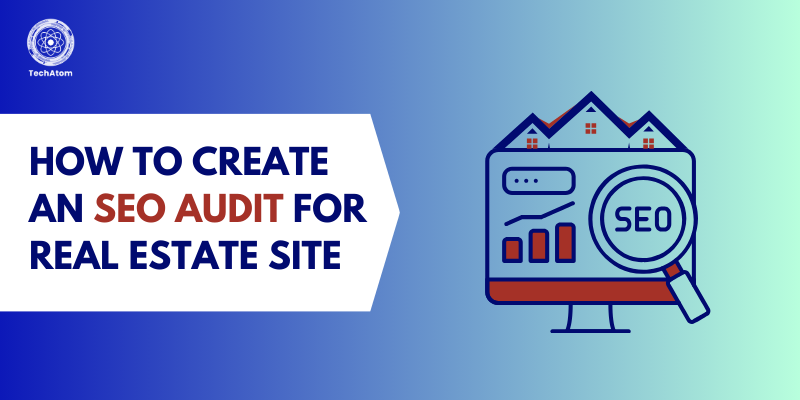An SEO audit displays a website's optimization for search engines. It checks technical issues, content quality, keyword targeting, site performance, and backlink health factors that influence how easily users and search engines can access and understand a site.
For B2B companies, SEO audits are significant. B2B buyers often go through long decision-making cycles and research-driven journeys. They use specific, low-volume keywords and search for solutions relevant to their role or industry. If your website isn't showing up for those searches or doesn’t align with how your buyers think and search, you are losing qualified leads.
This guide will review the key steps to create an SEO audit tailored for B2B companies. From technical checks to keyword strategy and content alignment, every section focuses on helping you attract the right audience and support revenue goals.
Set Audit Goals and Gather Tools
The first step while starting an SEO audit for a B2B company is to decide which components the audit should cover. The goal of an audit is to eliminate guesswork and help prioritize actions that directly support marketing and sales objectives.
1. Define the Scope
An SEO audit for B2B websites includes the following components:
- Technical SEO: It reviews a website's crawling, indexing, mobile usability, page speed, and structured data.
- On-page SEO: It assesses a website's titles, meta descriptions, headings, URLs, internal linking, and keyword placement.
- Off-page SEO: It evaluates a website's backlink quality, anchor text diversity, and referral domains.
- Content: It includes an assessment of relevance, quality, search intent alignment, and how the content supports the buyer journey.
- UX (User Experience): It checks for site navigation, layout, mobile responsiveness, and how easy it is for users to take the next step.
2. Identify KPIs
Every audit should have measurable outcomes. The most common KPIs for a B2B SEO audit include:
- Organic Traffic: Number of users arriving via search engines.
- Conversions: Form submissions, demo requests, or qualified leads generated through organic search.
- Keyword Rankings: Positions of high-intent and branded keywords in search results.
These metrics help show whether the site attracts the right audience and guides them toward action.
3. Tools to Use
The right tools make gathering accurate data and spotting issues across your site easier. Here are some essential ones:
- Google Search Console: Tracks indexing status, search queries, mobile usability, and site errors.
- Google Analytics / GA4: Displays user behavior, traffic sources, and conversion paths.
- Screaming Frog: Detects broken links, duplicate content, and missing metadata by crawling a website.
- SEMrush / Ahrefs: Analyzes keyword performance, backlinks, competitor strategies, and traffic trends.
- Sitebulb: Offers a visual audit of technical SEO issues and page-level problems.
- PageSpeed Insights: Tests page load times and provides suggestions to improve performance.
- SurferSEO / Clearscope: Helps evaluate how well your content matches search intent based on top-ranking pages.
With your goals set and tools ready, the next step is to work through each SEO category and start collecting actionable data.
Perform a Technical SEO Audit
A technical audit helps you confirm if search engines can find, analyze, and rank your website. It aims to find performance and crawling issues that may prevent your sites from appearing in search results. It includes the below factors:
1. Crawlability and Indexability
First, analyze your robots.txt file to ensure critical pages are still available on search engines. You should update the XML sitemap, include essential pages, and publish it to Google Search Console.
Review the Coverage report in Google Search Console to look for crawl faults and indexing issues. Look for pages labeled "Discovered - currently not indexed" or "Crawled - not indexed".
2. Site Speed and Core Web Vitals
Page speed influences how visitors engage with your website and how Google ranks it. Measure Core Web Vitals with PageSpeed Insights and Lighthouse, which include:
- Largest Contentful Paint (LCP): It displays the speed at which the main content loads.
- Cumulative Layout Shift (CLS): It displays the stability of the layout when loading.
- First Input Delay (FID) or Interaction to Next Paint (INP): It indicates how quickly visitors can interact with the page.
If needed, address poor server response times, unoptimized graphics, and unnecessary JavaScript.
3. Mobile-First Indexing
Your mobile site must be completely functional because Google indexes and ranks content largely on mobile devices. Confirm that all critical aspects, like menus, structured data, and internal links, are present and accessible on mobile devices.
4. HTTPS & Security
A safe website fosters trust among users and search engines. Check that your site is HTTPS-enabled, has a valid SSL certificate, and has no mixed content concerns.
Structured Data (Schema Markup)
Schema markup can assist search engines in understanding what your pages are about. Add necessary schemas such as Organization, Product, FAQ, or BreadcrumbList. Test your solution with Google's Rich Results Test tool.
5. Duplicate Content and Canonical Tags
Check for duplicate material with tools such as Screaming Frog or Sitebulb. Ensure that canonical tags direct search engines to the preferred version of a page. This helps to unify signals and prevents duplicate URLs from being indexed.
6. Broken Links and Redirection Chains
Fix any broken internal or external links to avoid dead ends for users and crawlers. Also, discover and remove redirect chains that delay crawling and dilute link equity. A tidy linking structure increases crawl performance and user experience.
Regular technical assessments keep your B2B website searchable and user-friendly. Each item on this list reduces friction, allowing search engines to focus on your content and visitors to achieve their goals more quickly.
Analyze On-Page SEO
Strong on-page SEO makes your material easier for search engines to understand while also increasing its usefulness to users. Focus on giving each page a clear purpose and enhancing how it interacts with search engines.
1. Title Tags, Meta Descriptions, and H1 Structure
Every page should have a distinct title tag that incorporates the primary keyword and accurately describes the page's content. Titles should have a maximum of 60 characters to avoid truncation in search results.
Meta descriptions should be engaging and provide a clear call to action. Although not a direct ranking element, they can have an impact on click-through rates. Ensure meta descriptions have 150 to 160 characters.
The H1 tag should include the target keyword and be relevant to the page's theme. Avoid using numerous H1s and keep heading tags (H2, H3) in logical order to improve readability and structure.
2. Keyword Targeting
Optimize each page for a single keyword or search intent. Match terms to buyer personas and funnel stages (awareness, consideration, or decision). This aligns the material with search intent, preventing overlap or keyword cannibalization between sites.
Tools like SEMrush or Ahrefs help to find keyword opportunities and use them naturally in headers, body content, alt tags, and metadata.
3. Internal Linking Strategy
Use internal links to direct users to relevant sites and spread link equity throughout your website. Anchor text should be descriptive and appropriate for the target page. Link anchor text to pages that convert well or are strategically important, such as service or product description pages.
Review internal linking on a regular basis to remove broken links, update obsolete ones, and verify that orphaned pages link to the rest of the site.
4. URL Structure and Hierarchy
URLs should be brief, informative, and keyword-rich. Avoid superfluous arguments and complex folder structures. Use hyphens to separate words, and make sure the structure matches the page's position in the site hierarchy.
For example, a category page could have the following format:
- Main URL: yourdomain.com/category/
- Subpage URL: yourdomain.com/category/subpage/
This helps both search engines and users understand your content organization.
5. Image Optimization
Use alt tags to describe the image's content, and include relevant keywords where applicable. To speed up loading, compress images without sacrificing quality.
Use TinyPNG and ImageOptim to minimize file size. Also, it offers photos in contemporary formats such as WebP to boost efficiency.
On-page components that are properly optimized can increase keyword ranks, user engagement, and crawlability, all of which contribute to better SEO performance.
Evaluate Content Strategy
A solid content strategy improves lead generation and search exposure. Examine how well your content connects with corporate objectives, search demand, and buyer journey stages.
1. Audit of Topic Clusters and Funnel Stage
Divide your content into topic clusters, with a center pillar page and accompanying pages. Each cluster should perform a specific function, depending on the funnel stage. TOFU (top of the funnel) for awareness, MOFU (middle of the funnel) for evaluation, and BOFU (bottom of the funnel) for conversion.
Tools like Screaming Frog or Semrush help organize and tag URLs based on the topic and funnel stage. This aids in the identification of gaps, redundancy, and chances for better internal connection.
2. Identify Thin, Outdated, or Duplicate Content
Look for pages that have a low word count, low engagement, or little traffic. Outdated content should be updated or combined with higher-performing sites. Remove or redirect duplicate content to prevent search engine cannibalization and confusion.
Perform regular audits to identify these issues early on and keep your material fresh and relevant.
3. Analyze Traffic and Conversion Data
Analyze how each piece of material adds to your objectives. Review pageviews, time on page, bounce rate, and assisted conversions. Pages that generate traffic but not conversions may require stronger CTAs or more precise wording. While pages that convert well but lack visibility may benefit from SEO enhancements.
Prioritize changes according to their performance and business impact.
4. Perform Competitor Gap Analysis
Compare your material to competitors who target comparable keywords or audiences. Use SEO tools to find themes where competitors rank, but you do not. Concentrate on developing original, value-driven content to fill such gaps.
Examine how they structure their material, the forms they employ (guides, templates, case studies), and where they obtain backlinks.
5. Optimize for Featured Snippets and Rich Results
Target searches that generate featured snippets by arranging content in lists, tables, or Q&A formats. Use schema markup to boost your chances of receiving rich results. Answer specific queries early in the content, and keep the language simple.
This improves search visibility and can lead to increased click-through rates without needing higher rankings.
Off-Page and Backlink Profile Analysis
Off-page SEO influences how search engines assess authority and trustworthiness. A high backlink profile demonstrates quality, variety, and relevance.
1. Focus on Link Quality Over Quantity
A few strong links from relevant, authoritative sites are more valuable than dozens from unrelated or low-quality domains. Prioritize backlinks from websites in your niche, particularly those with high traffic and engaged audiences.
Check domain ranking and traffic metrics for linked sites using Ahrefs, Moz, or Semrush. Look for links from spammy, irrelevant, or low-authority domains that may impair performance.
2. Benchmark Against Competitors
Examine how competitors are earning links. Identify their most popular referring domains, high-performing sites, and anchor methods. This helps to identify link gaps and chances to pursue.
Competitive benchmarking also reveals what types of content or initiatives gain momentum in your industry.
3. Reclaim Lost Backlinks
Check for deleted links—when a referring domain removes or breaks a backlink. Revisit these pages and contact the site owners with updated content or alternate URLs. Recovering lost linkages is faster and more efficient than creating them from scratch.
4. Create New Links Using Strategies
Earn links by conducting original research, writing long-form guides, publishing data-driven articles, and providing unique thought leadership. Collaborate with industry blogs, platforms, and communities to offer guest posts or co-marketing content.
Collaborate with your internal teams (PR, sales, and product) to identify more link-building opportunities. A consistent flow of reputable backlinks builds authority, improves ranks, and increases referral traffic.
Keyword & Competitor Analysis
Targeting the right keywords is critical for B2B SEO performance. Begin with terms that indicate purchasing intent and are consistent with your solutions.
Prioritize keywords associated with decision-making, product comparisons, and solution-focused searches. These frequently move leads further forward in the sales process.
1. Identify high-intent B2B keywords
Use keyword research tools like SEMrush or Ahrefs to select high-converting terms based on search volume, difficulty, and cost per click. Concentrate on terms that relate to pain points, use cases, and product categories. Don't neglect long-tail variations; they frequently capture more precise business requirements.
2. Identify Content Gaps vs Competitors
Check out which keywords your competitors rank for but you don't. Content gap tools can help you identify missed opportunities during the awareness, consideration, and conversion stages. Mapping these gaps offers you a clear picture of where you should grow or improve your content.
Examine how competitors arrange their top-ranked pages. This indicates the type of material format, length, and search intent they are targeting.
3. Analyze Competitors' Backlink Strategies
Investigate where your competitors receive their backlinks, whether from blogs, media outlets, directories, or industry resources. Look for recurrent sources and backlinks to specific sorts of material, such as case studies or tools. This demonstrates what works for them and gives you ideas for your outreach.
Look at backlink velocity and anchor text distribution to better comprehend their authority-building strategies. If competitors are gaining links from places where your domain is not, it's time to take notice.
4. Benchmark with Ahrefs or SEMrush
Use SEO tools to monitor keyword ranks, backlink growth, visitor estimations, and top-performing content on competing websites. Create benchmarks to see how your SEO efforts compare over time.
Regularly analyzing what your competitors are ranking for—and how they are gaining visibility—allows you to stay relevant and identify new areas to get traffic and leads.
UX & Conversion Optimization Review
The user experience directly influences how long visitors stay on your site and whether they convert into leads. A clean structure, easy navigation, and strategically placed calls-to-action can boost engagement and promote growth.
1. Site Architecture and User Journey
Check how easy it is to navigate your website. Menus should be straightforward, and crucial sites should be accessible with just a few clicks. Remove superfluous steps from the user journey to reduce friction and direct visitors to your conversion goals.
2. Mobile Usability
With increasing B2B buyers researching on mobile devices, your site must be responsive and speedy. Check mobile load times and font legibility, and confirm that buttons and forms function correctly on smaller displays.
3. CTA Placement and Lead Generation Forms
Calls to action should be prominent and relevant to the content of each page. Place them in areas where users are likely to pause or scroll, such as product pages, blog material, or pricing sections. Keep lead forms short and straightforward to fill. Ask simply for the information required to qualify a lead.
4. Page Depth and Bounce Rate
Use Google Analytics or Hotjar to track how users interact with key sites. A high bounce rate could indicate delayed loading times, confused design, or poor message match. Check if visitors are reaching critical portions of the site or leaving too early.
5. SEO's Impact on Lead Generation
SEO success is more than just rankings; it is also about the organic traffic conversion rate. Track which pages generate qualified leads and how they progress through your pipeline. Optimize top-of-funnel and bottom-of-funnel content to increase conversions at various buyer phases.
A seamless user experience combined with SEO-focused content can convert traffic into genuine business outcomes.
Local & International SEO (If Applicable)
If your B2B company serves customers in specific regions or across numerous nations, location-based optimization can help with discovery and trust.
1. Regional Targeting of B2B Buyers
Begin by determining the geographic markets in which you want to increase awareness. Align keyword research with how buyers search in each location, considering variances in vocabulary, product name, and business demands.
2. Google Business Profile for Local Presence
Setting up and maintaining a Google Business Profile is critical for local service businesses. Include correct business information, maintain working hours, submit relevant photographs, and promote reviews. This can help to increase local search visibility and trust.
3. Hreflang for Multilingual or Multi-Regional Websites
If your website is accessible in many languages or nations, utilize hreflang tags to indicate the proper version to search engines. This prevents duplicate content concerns and ensures readers land on the correct language or region-specific page.
Targeting search visibility by geography enhances relevance and raises the likelihood of attracting conversion-ready decision-makers.
Create an SEO Audit Report
An SEO audit is only beneficial when it prompts action. Organize findings into an easy-to-understand report that is linked to actual consequences.
1. Prioritize by Impact
Classify all concerns as Critical, High, Medium, or Low according to their potential impact on visibility, traffic, and conversions. First, address anything preventing indexing or negatively impacting the user experience.
2. Support for Visuals and Tools
Use pictures, graphs, and data extracted directly from audit tools such as Ahrefs, SEMrush, and Google Search Console. Visual components make it easier to communicate issues and track progress over time.
3. Connect SEO to Business Goals
Explain how each fix or enhancement helps to achieve more significant business goals, such as increasing quality leads or enhancing MQL to SQL conversion. This increases internal support and makes your report valuable across departments.
4. Create a Roadmap
List fast victories, such as correcting broken links or missing meta tags, that can yield early results. Then, identify long-term goals like content upgrades, internal linking tactics, and backlink enhancements.
Conclusion
Regular SEO audits assist in detecting and resolving issues that quietly impede progress. Ongoing assessments and testing guarantee that technical health and search performance align with business objectives.
SEO should not work in isolation; instead, it should collaborate with sales and marketing departments to guarantee consistent messaging and improve funnel conversion.
People are also reading:




